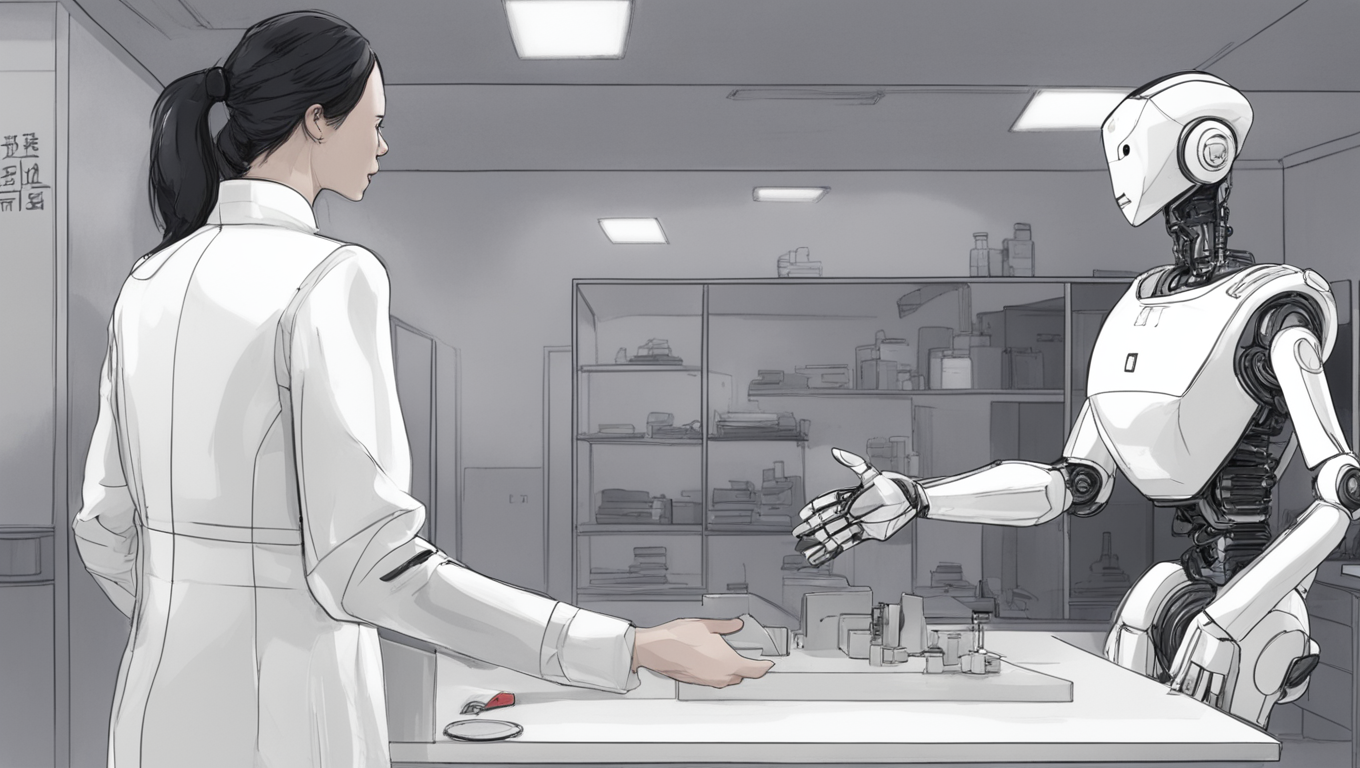In the bustling streets of Beijing, a new robotics center is making waves with its announcement of a general-purpose humanoid robot prototype. This development is seen as a symbol of China’s commitment to technological innovation and high-end manufacturing, particularly in the face of a tech war with the United States.
The Beijing Humanoid Robot Innovation Center, established in late 2023 through collaboration between private and state-owned enterprises, is set to revolutionize the robotics industry. The center boasts leading experts and research and development personnel from various fields, aiming to create a common technological platform, a public service platform, and regulatory standards for the humanoid robot industry.
The ultimate goal of the center is to bring humanoid robots into thousands of households, penetrating industries such as automobile manufacturing and 3C manufacturing (computer, communication, and consumer electronics), thereby enhancing China’s industrial manufacturing capabilities. While details about the prototype and its release date remain scarce, the center has promised that it will be coming soon.
China’s push for technological advancement comes at a critical time. The country is grappling with a property market crisis, a rapidly aging population, and a shrinking labor force. Therefore, upgrading growth drivers with new tech-led “productive forces” is crucial to sustaining economic progress. Humanoid robots, which combine artificial intelligence, high-end manufacturing, and new materials, are seen as a key element in achieving self-reliance and fostering home-grown innovation.
While China is making significant strides in the humanoid robot industry, it still faces challenges in its domestic supply chains for core components. Overseas manufacturers currently dominate the global market, benefiting from their first-mover advantage in research and development, supply chain maturity, and market promotion.
However, the Chinese government is determined to overcome these obstacles and position the country as a leader in the humanoid robot sector. The Ministry of Industry and Information Technology (MIIT) has outlined goals for innovation, technological breakthroughs, and the safe supply of core components to facilitate mass production. The MIIT envisions humanoid robots becoming a “disruptive innovation” that propels economic growth, akin to computers, smartphones, and new-energy vehicles.
To support this vision, local authorities in major cities like Beijing, Shanghai, and Shenzhen have incorporated the humanoid robot sector in their development plans. For example, Beijing has established a 10 billion yuan (US$1.4 billion) robotics fund to transform the capital into a global hub for the humanoid robot industry.
While China has made significant advancements in algorithm development for humanoid robots, there is still room for improvement in fundamental frameworks and technical reserves. Xu Lijin, a delegate with China’s top advisory body, emphasizes the need for collaboration between humanoid robot companies and partners to expand the scope of product application and drive innovation in the industry.
As the Beijing Humanoid Robot Innovation Center gears up to unveil its prototype, the world eagerly awaits the next chapter in China’s journey towards technological dominance. With its ambitious goals and collaborative efforts, China is poised to shape the future of the humanoid robot industry, driving economic growth and cementing its position as a global tech powerhouse.





Use the share button below if you liked it.